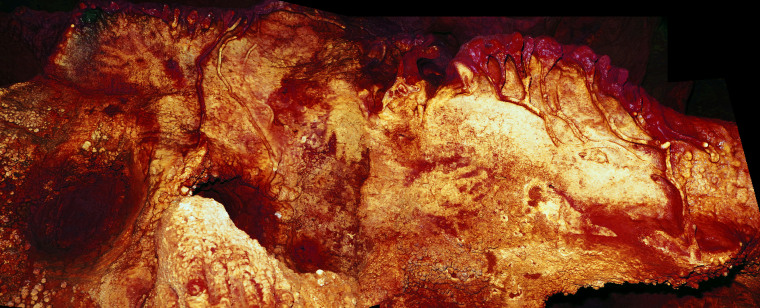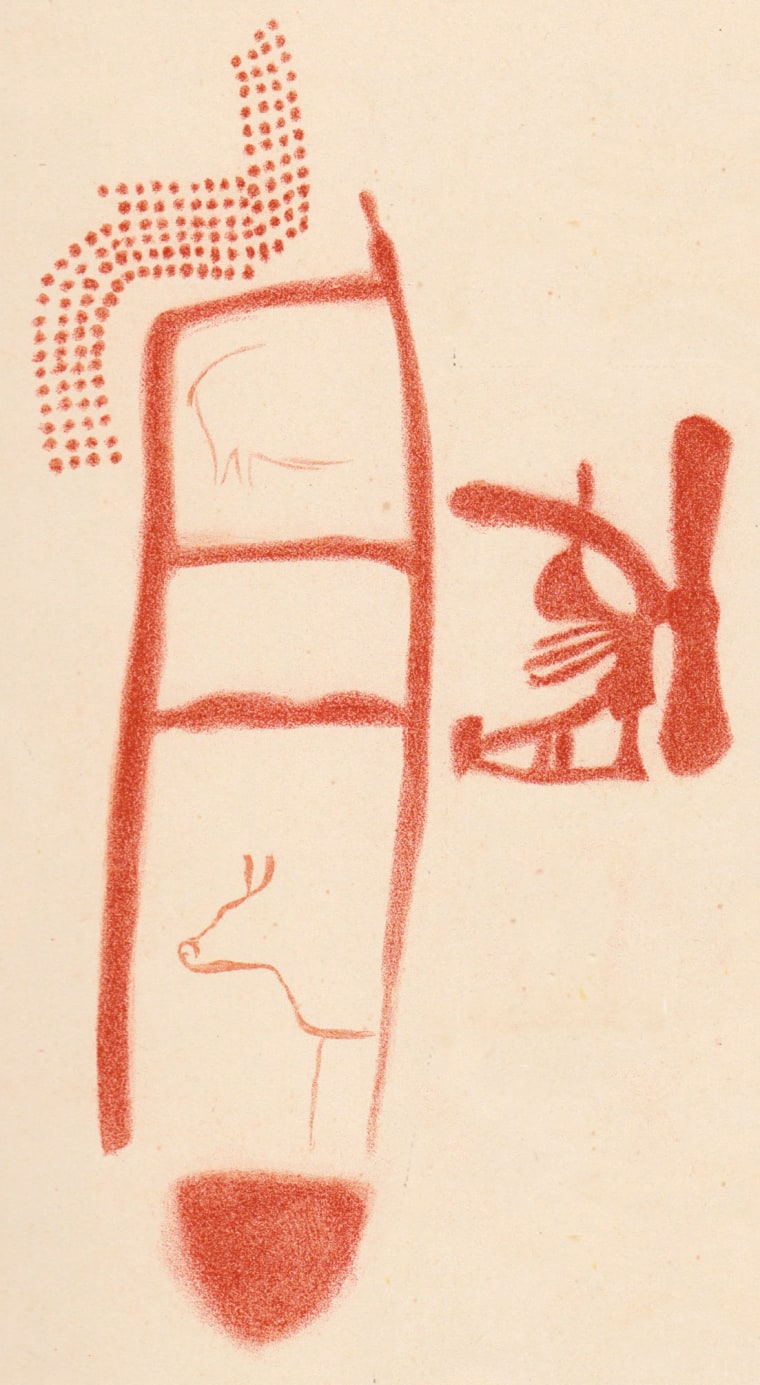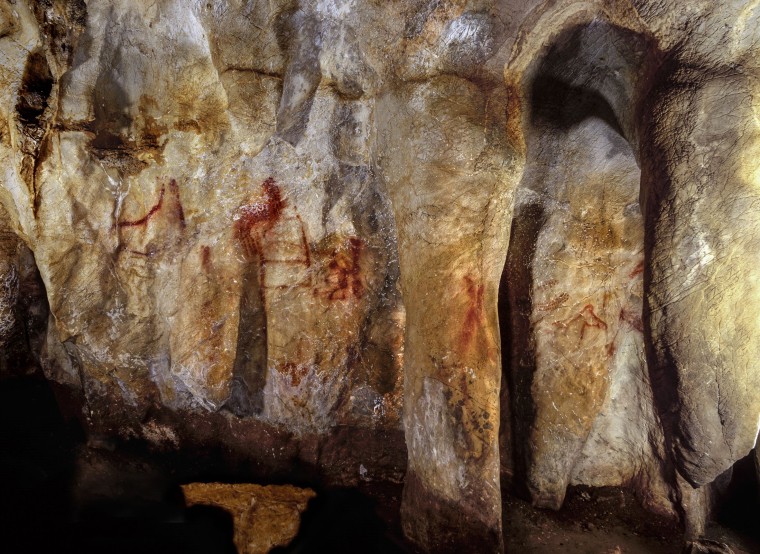Some of the oldest cave art found in modern-day Spain is too old to have been made by modern humans, researchers reported Thursday.
The paintings of animals, hand stencils and other drawings must have been made by Neanderthals, the team reports in the journal Science.
And Neanderthals were at it for a long time: the cave art spans a period of 25,000 years, the team of European researchers said.

There’s also more evidence that Neanderthals made jewelry, a second report finds. Shells have been dyed and carefully pierced in a way that would make them easy to string together or sew onto clothing.
Together, the researchers say the findings prove that Neanderthals were every bit as smart as modern humans.
The cave art dates back to 64,000 years ago, the team at the University of Southampton in Britain, Germany’s Max Planck Institute, Spain’s University of Barcelona and others reported. And the shell jewelry is even older — as old as 115,000 years, the same team found.
"Our results show that the paintings we dated are, by far, the oldest known cave art in the world, and were created at least 20,000 years before modern humans arrived in Europe from Africa - therefore they must have been painted by Neanderthals,” said Chris Standish, an archaeologist at the University of Southampton.
"This is an incredibly exciting discovery which suggests Neanderthals were much more sophisticated than is popularly believed.”
For decades, Neanderthals were portrayed as a brutish, hulking species of human. But more recent research has shown they interbred with modern humans, and that many people alive today carry Neanderthal DNA.

There has also been controversial evidence of cave art and jewelry making. Some scientists have suggested that if Neanderthals made art or jewelry, the were merely copying the modern humans who moved into Europe and lived alongside them for thousands of years.
The two reports in Science and Science Advances support strongly the idea that the Neanderthal inhabitants of Europe enjoyed the beauty of both art and adornment on their own, without Cro-Magnon coaching.
The jewelry found in the Spanish Cueva de los Aviones is older than anything similar found that was made by modern humans, they wrote.

“In conjunction with the evidence that cave painting in Europe dates back to at least 64,800 years ago, it leaves no doubt that Neanderthals shared symbolic thinking with early modern humans and that, as far as we can infer from material culture, Neanderthals and early modern humans were cognitively indistinguishable,” they concluded.
Combined with fossils that shows their hearing structures were the same as ours, the findings suggest Neanderthals also used language, the team said.
"The emergence of symbolic material culture represents a fundamental threshold in the evolution of humankind. It is one of the main pillars of what makes us human,” said Dirk Hoffmann, of the Max Planck Institute for Evolutionary Anthropology.
The team used uranium-thorium dating, a little different from radiocarbon dating, to reach their conclusions. It uses carbonate deposits that are found alongside or, sometimes, deposited on top of the samples.
The carbonate forms crusts inside the caves they worked in, found in three far-apart sites in Spain — in Cantabria, Extremadura and Andalucia.
There are straight lines, pictures of animals, groups of dots and hand stencils.

“Cave art such as that dated here exists in other caves of Western Europe and could potentially be of Neanderthal origin as well,” the team wrote.
“Red-painted draperies are found at Les Merveilles (France) and El Castillo (Spain), whereas hand stencils and linear symbols are ubiquitous,” they added.
“We therefore expect that cave art of Neanderthal origin will eventually be revealed in other areas with Neanderthal presence elsewhere in Europe.”


